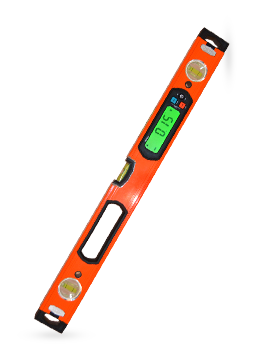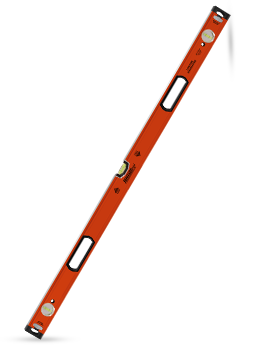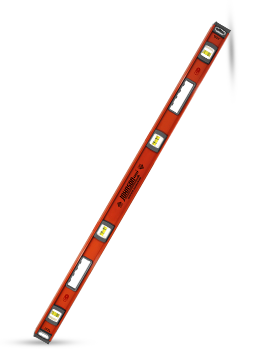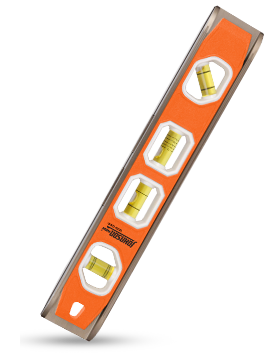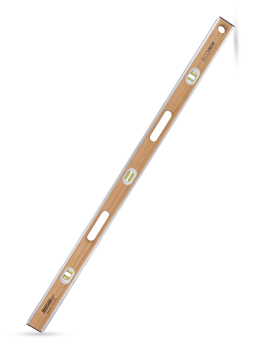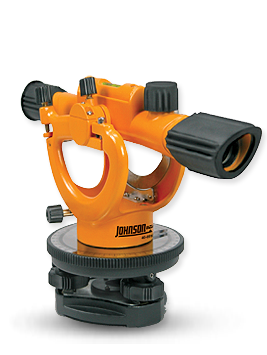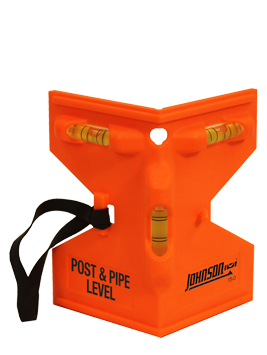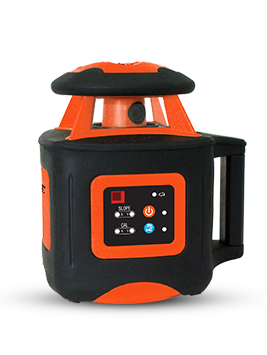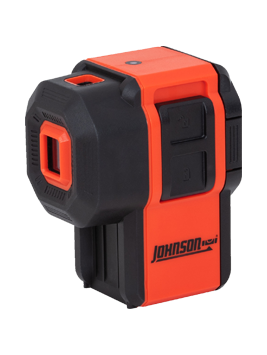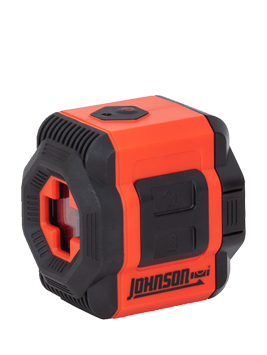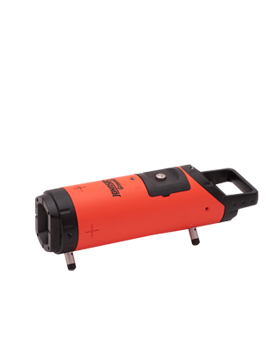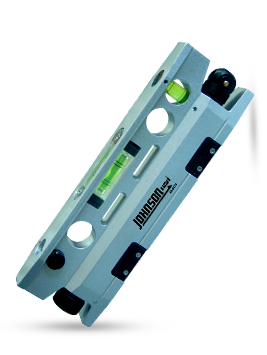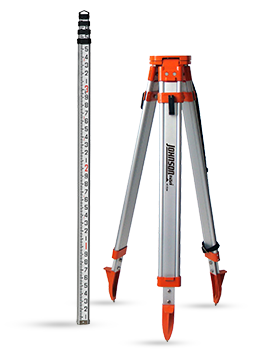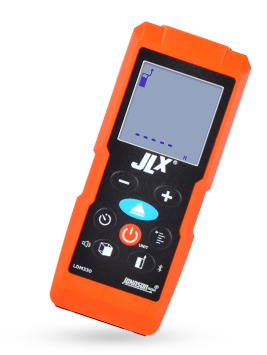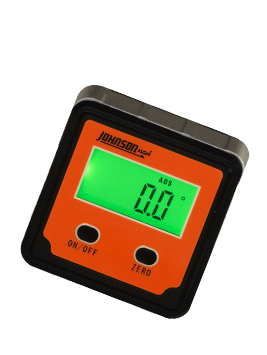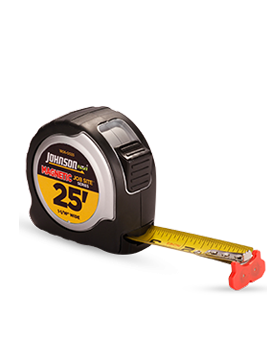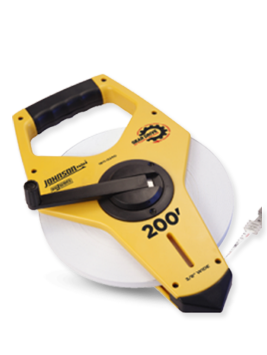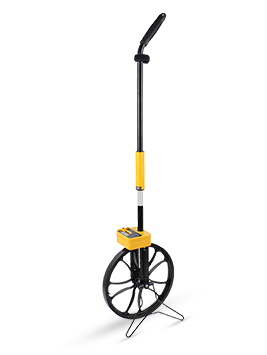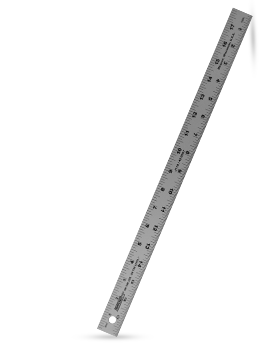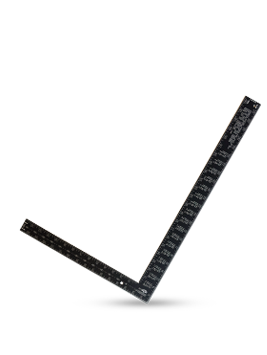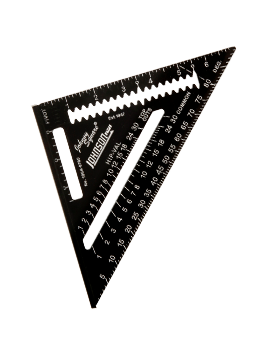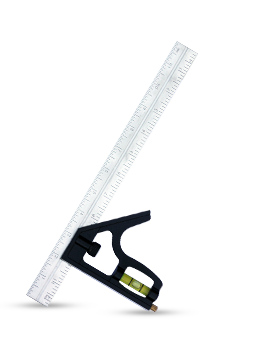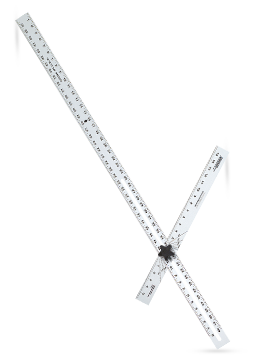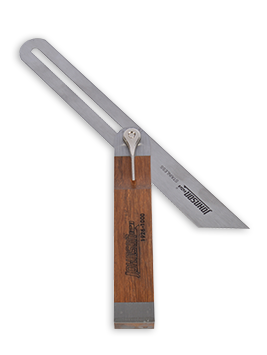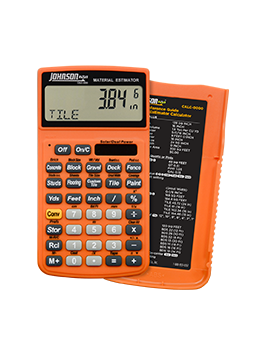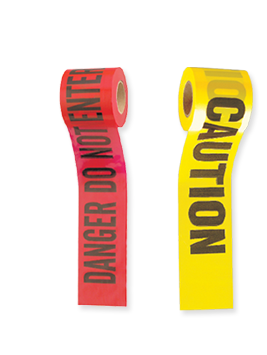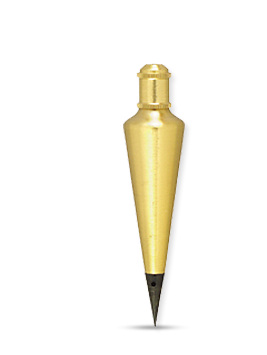Grade Rods: All About Grade Rods
Grade Rod
- How to Read a Grade Rod
- How to Read an Engineer's Grade Rod
- How to Read a Builder's/Architect Grade Rod
- How to Read a Direct Elevation Grade Rod
View all grade rods from Johnson Level.
A Grade Rod or leveling rod, is a graduated rod used to determine differences in elevation. Grade Rods can be used with surveyor, optical and laser levels. Grade Rods can be made up of several different materials; however, the most common are made out of:
- Wood
- Plastic
- Fiberglass
Grade Rods can have adjustable segments or be constructed of a single piece of material. Aluminum rods may adjust length by sections telescoping inside of each other while wooden rods have sections that are attached to each other with slip joints. Grade Rods also use different graduations. They can be graduated many different ways including:
- Feet, Inches
- Fractions
- Tenths, Hundredths
- Meters, Centimeters
Some Grade Rods are graduated only on one side, while others have measurements on both sides. If marked on both sides, Grade Rods can have either the same graduations all around or they can have imperial units on one side and metric units on the other. Length in Grade Rods varies greatly. Some rods can extend up to 25 feet; others range around 8 feet tall. When using a Grade Rod, be sure that it is fully extended for the most accurate results. If you find yourself in need of a Grade Rod but cannot afford one, you can always use the old-fashioned method of a strip of wood and a tape measure.
Types of Grade Rods
There are three distinct types of Grade Rods:
- Engineer's Rod
- Builder's/Architect's Rod
- Direct Elevation Rod
Engineer's Rod
Engineer's rods have graduations that are measured in feet, as well as tenths and hundredths of a foot. The rod is marked very clearly in high contrast; allowing for easy reading. Typically on an engineer's rod, the full foot numbers are marked in red. The tenths of each foot are marked with black numbers, and the hundredths of each foot are marked as tick marks in between the numbers. The tick marks are unique because if the measurement is at the top of the tick mark, it is an even hundredth. If the measurement is at the bottom of the tick mark, it is an odd hundredth.
Since the engineer's rods have a decimal system, it is much easier to use for calculations. The numbers being recorded add up neatly in columns and can be converted easily at the end of the calculations.
Builder's Rod
The builder's rod, also known as an architect's rod, is very similar to the engineer's rod. The main difference between the two is that the builder's rod is divided into inches and fractions of inches instead of decimals. The measuring system on a builder's rod is similar to a tape measure which makes it more comfortable and familiar for builders.
Like the engineer's rod, the builder's rod has feet marks in red. However, inches are marked in black and tick marks represent eighths of inches. When you are adding and subtracting measurements on a builder's rod, it is necessary to convert the fractions into the lowest common denominator. This is much more challenging and time consuming than the decimal system used with engineer's levels.
Direct Elevation Rod
The direct elevation rod is even more efficient than the engineer's level at recording elevations. It allows elevations to be measured without adding in or subtracting out previous rod readings. The direct elevation rod has numbers that read down the rod, instead of up the rod like the other Grade Rods.
Direct elevation rods have two sections:
- Upper section: the front of the rod.
- Lower section: the back of the rod.
The upper section of the direct elevation rod holds a movable loop of steel measuring tape. This section is marked either in the decimal form of feet, tenths and hundredths of a foot or in feet, inches and fractions. The lower section is shortened or lengthened to make the marked section be visible.
How to Use a Philadelphia Rod
The most common engineer's rod is called the Philadelphia Rod. The "Philly" rod, named after the city it was created in, contains two wooden sections. It can be extended from 7 feet to 13 feet. The Philly rod has a front side as well as a back side. Along with all other Grade Rods, it is important to ensure that the Philly rod is fully extended; if it is only extended partially, the graduations will not be accurate.
Each foot on the Philly rod is divided into hundredths of a foot. The distance between the hundredths is painted black on a white background. The bottom of the black mark is odd values, and the top of the black mark is even values.
The rod must be placed on the correct point exactly and held plumb throughout. If the rod is in the wrong place or not held plumb, the readings will be incorrect and useless. In keeping the rod plumb, a bulls-eye level may be used. If there is not a bulls-eye level attached to the rod, you can make sure its plumb by lining it up with the vertical crosshair of the telescope on the instrument being used.
Rod Targets
A rod target is used to give the operator a larger area to focus on and is commonly used with Grade Rods. Rod targets provide more accurate readings to be made and are essential for use when there is poor visibility or other factors that could hinder the readings.
Rod targets are typically an oval-shaped metal plate that attaches to the rod. They are white, orange and red to make for easy reading and can be placed anywhere on the rod. When using a rod target, the operator must move the target up or down the rod until the cross point of the target is aligned with the crosshairs on the level's telescope. The cross point on the target is the area where the colors meet in the center.
Target Vernier Scale
When using a leveling instrument with a rod target, the readings can only be exacted to 1/100'. Adding a vernier scale to the rod target allows the measurements to be exact to 1/1000'. Vernier scales divide the hundredth scale on the Grade Rod into ten parts. It is important to adjust the vernier scale so that the zero is placed at the exact cross point of the rod target.
How to Use a Direct Elevation Rod
Direct elevation rods provide a convenient way to examine and record elevations. The elevation of the benchmark is used as a prefix number. The prefix number is measured to the nearest tenth place and is always added to each additional reading. Direct elevation rods are prone to calculation errors if the user is not aware of possible discrepancies. Certain discrepancies can occur if the next elevation mark after the benchmark is below the benchmark elevation. Another common inconvenience for direct elevation rods is that they cannot be inverted. Although there are a few disadvantages in using a direct elevation rod, most users find them more convenient than other Grade Rods.
When using a direct elevation rod, the user must be aware of the turning point process. A turning point can be any hardened surface that has a definable high point that can be reproduced. Turning points are essential when an area of the jobsite is not visible from the initial instrument setup location. A direct reading from the Grade Rod is used to determine the elevation of the turning point. Instead of moving the rod from the turning point, the instrument is moved to a new location. The instrument is then leveled and adjustments are made to correctly make new measurements.
Caring For a Grade Rod
Grade Rods are delicate instruments. They need to be handled with care and protected from objects that could damage or scratch the numbers painted on the instrument. Grade Rods should be dried immediately if they become wet, and they should never be exposed to chemicals that could corrode or damage them.
The safest place for a Grade Rod to be stored is upright in a protected area. Leaving a Grade Rod on the ground or against a wall may cause serious damages. Always collapse the Grade Rod before transporting it and never drag the instrument.
How to Read A Grade Rod
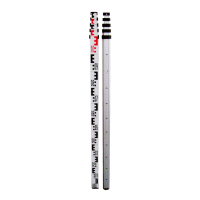 Within the three main types of grade rods, there are subtle yet important differences in the markings on them and how those markings are oriented.
Within the three main types of grade rods, there are subtle yet important differences in the markings on them and how those markings are oriented.
How to Read an Engineer's Grade Rod
Engineer's Rods: (0.00') - measurements are easier to calculate and put into tables and charts. (40-6320)
- Lower numbers on the bottom. Higher numbers on top.
- Divided into feet, tenths of a foot, and hundreths of a foot.
- Full foot marks are red. Tenths of a foot are marked by black numbers. Hundreths of a foot are marked by ticks between the numbers--the top of the ticks are even hundreths, and the bottom of the ticks are odd hundreths.
How to Read a Builder's/Architect Grade Rod
Builder's/Architect's Rods: (0' x/y") - measurements are familiar to builders, though harder to add and compare before being converted. (40-6325, 40-6316)
- Lower numbers on the bottom. Higher numbers on top.
- Divided into feet, inches, and fractions of inches.
- Full foot marks are red. Inches are marked by black numbers. Eighths of inches are marked by ticks between the numbers--the top of the ticks are even eighths, and the botom of the ticks are odd eighths.
- Remember to convert the fractions into their LCD (lowest common denomenator) to make computations easier.
How to Read a Direct Elevation Grade Rod
- Higher numbers on bottom. Lower numbers on top.
- Has two sections: upper (front) and lower (back).
- Can have either form of measurements on it--check your specific DE Rod to know which you have.
View all grade rods from Johnson Level.
Take a look at the rest of Johnson Level's How-To guides to familiarize yourself with the functions of your tools.
